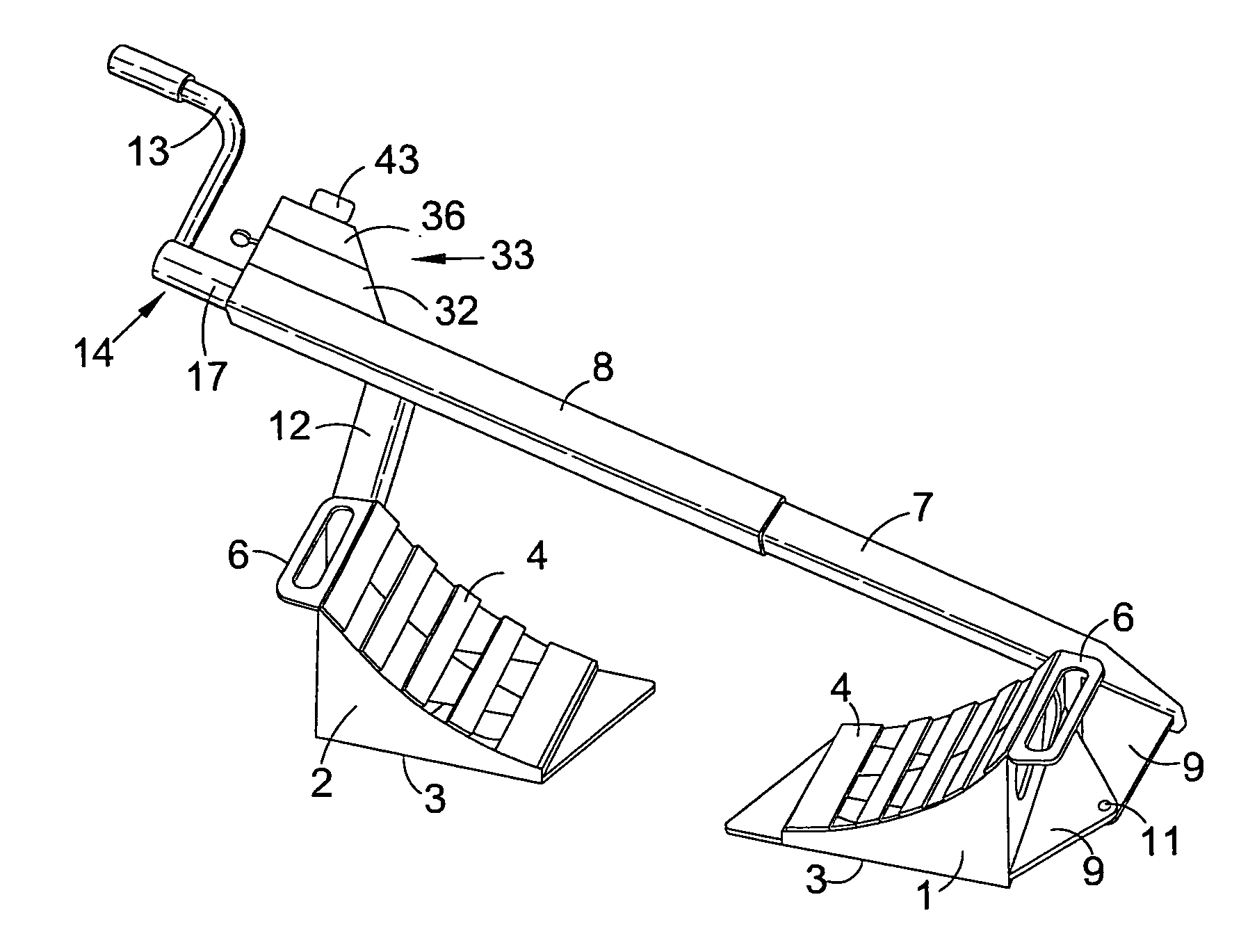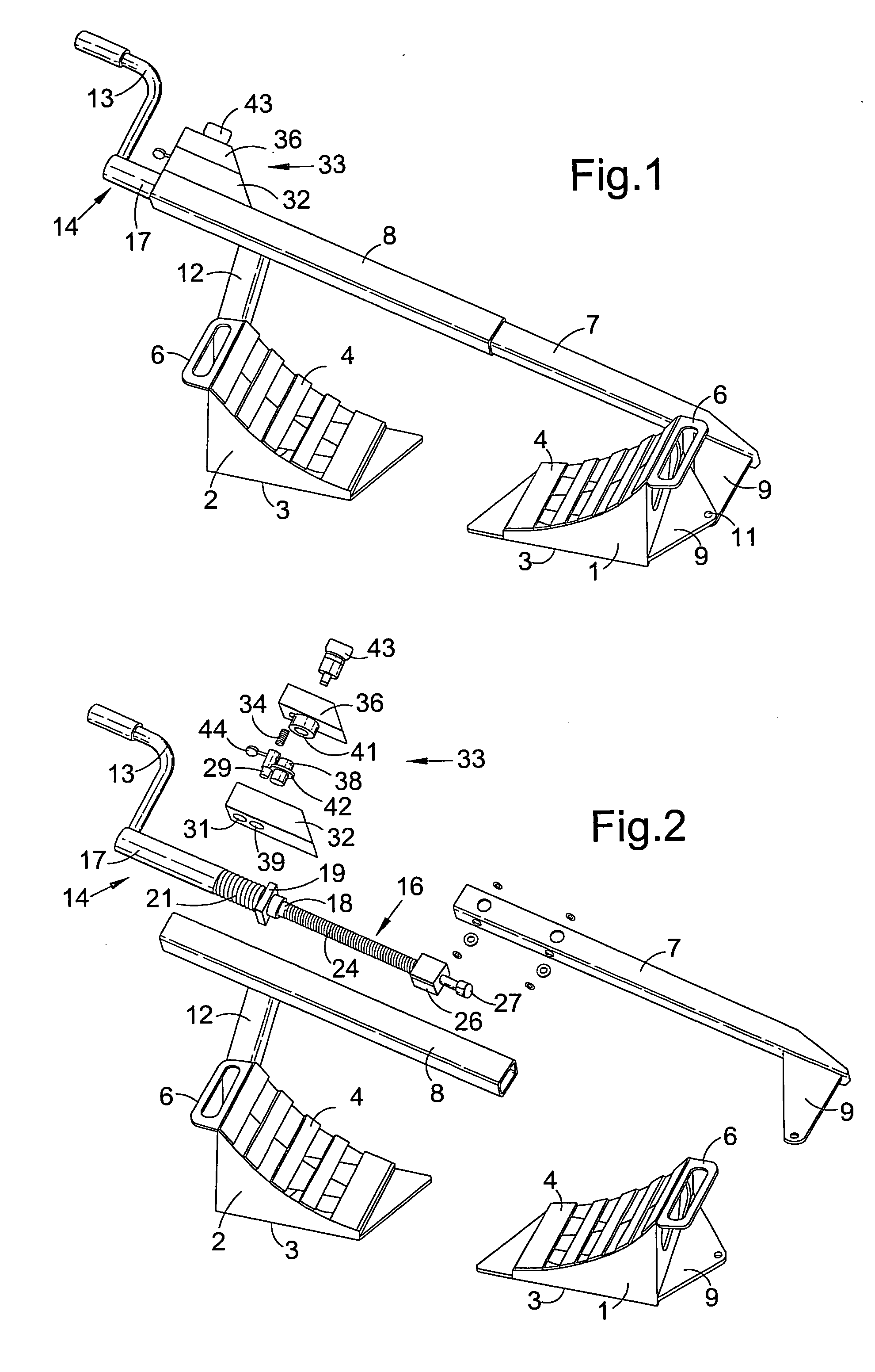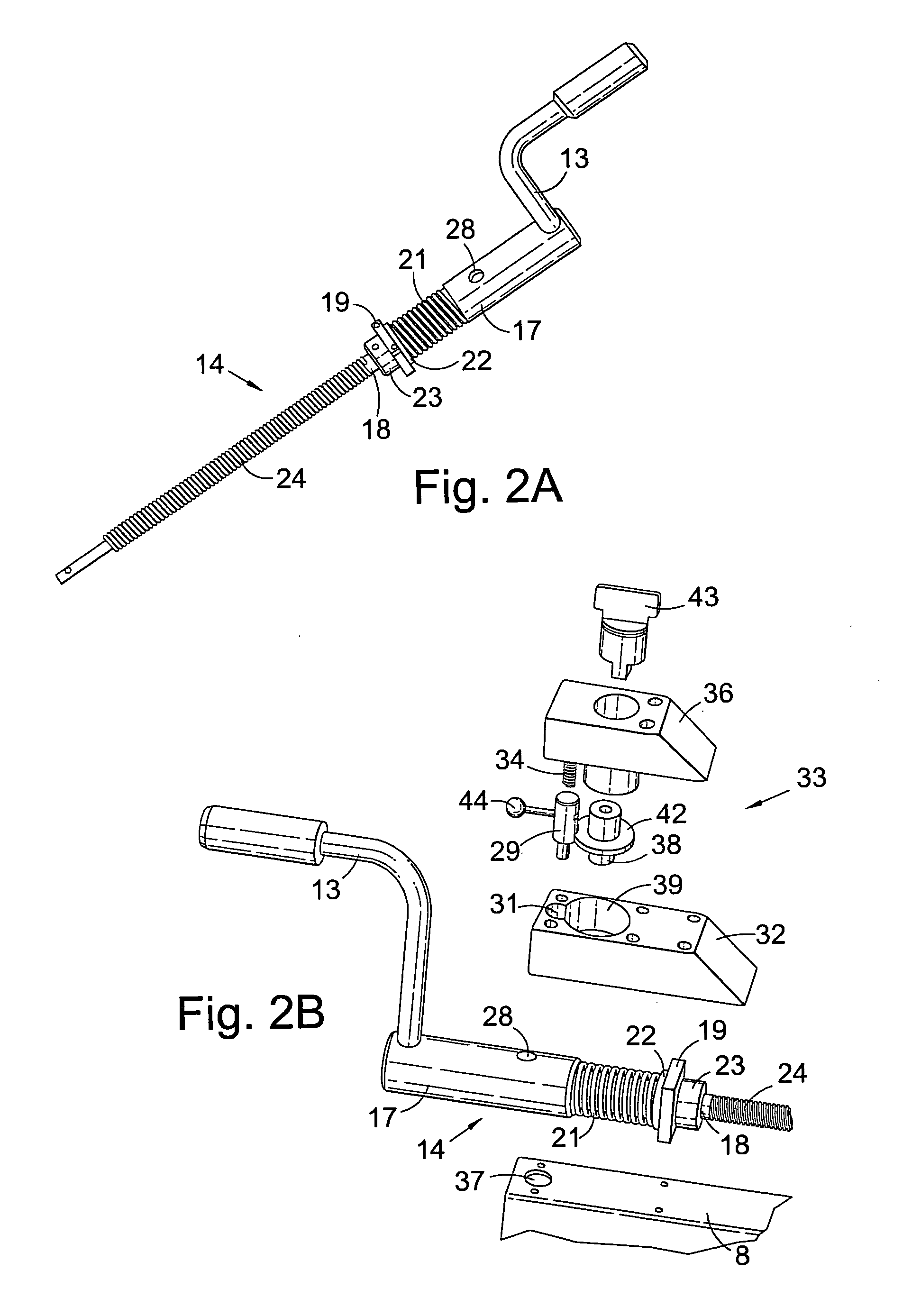Device for immobilizing a vehicle
a technology for immobilizing devices and vehicles, applied in surveying, navigation, instruments, etc., can solve the problems of cumbersome operation, relying on correct procedures, and quite expensive systems
- Summary
- Abstract
- Description
- Claims
- Application Information
AI Technical Summary
Benefits of technology
Problems solved by technology
Method used
Image
Examples
first embodiment
[0087] The immobilizing device, also referred to below as a safety device, illustrated in a first embodiment in FIGS. 1 to 4, comprises a first member 1 engageable with a first portion of a vehicle wheel (not shown), this portion being part of the tread of the tyre of the wheel near the location at which the tyre is in contact with the ground. A similar second member 2 is engageable with a second portion of the wheel; in this embodiment that portion is part of the tread of the tyre on the opposite side of the ground contact location.
[0088] The two members 1, 2 are each in the form of a chock, being wedge-shaped, and having a flat base 3 and an inclined upper surface 4 which, as shown, is preferably concave. Each chock 1, 2 has a lug 6 to facilitate handling. The chocks 1, 2 are mounted on respective elongate supports 7, 8 in the form of tubes which are preferably of polygonal section, more preferably rectangular section or square section, as shown. One support 7 is telescopically sl...
second embodiment
[0101] FIGS. 5 to 9 show the immobilizing device, in which a pneumatic drive is used to move the first and second members. The device resembles a wheel clamp and comprises a base frame 51, having an elongate front part 52 and a pair of side parts 53, 54, mounted on four castors 56. A front panel 57 rises from the front part 52 and prevents tampering.
[0102] The immobilizing device has a fixed chock 58 and a movable chock 59. The chocks 58, 59 are connected by respective pivots 61, 62 to respective supports 63, 64. The support 63 is fixed to on side part 53 of the base frame 51. The support 64 is connected to a driving device or mechanism constituted by a pneumatic piston-and-cylinder device 66. Compressed air fed to the cylinder 67 forces the piston 68 into the cylinder and causes the chock 59 to be drawn towards the chock 58. The compressed air is generated manually by a reciprocating pump 69 comprising a cylinder 71 containing a piston 72 driven back and forth by a handle 73 pivota...
third embodiment
[0123] FIGS. 22 to 26 show the immobilizing device, in which a rack and pawl drive is used to move the first and second members towards each other and in which engagement with a vehicle wheel is detected by the movement of one member against spring resistance. The device comprises a first member or chock 101 fixed on a first elongate support 102 telescopically slidable in a second elongate support 103 on which a second member or chock 104 is mounted by means of a pivot 106 with a vertical axis 107.
[0124] A foot-operated lever or pedal 108 is mounted by means of a horizontal pivot pin 109 on a bracket 111 fixed on the second support 103. A pawl 112, connected to the lever 108 by a pivot pin 113, acts on a ratchet 114, formed on the first support 102, so as to urge the first support into the second support 103 when the lever 108 is depressed, thereby moving the two chocks 101, 104 towards each other. The lever 108 is returned to its normal position (FIGS. 22 and 25) by a coil spring 1...
PUM
 Login to View More
Login to View More Abstract
Description
Claims
Application Information
 Login to View More
Login to View More - R&D
- Intellectual Property
- Life Sciences
- Materials
- Tech Scout
- Unparalleled Data Quality
- Higher Quality Content
- 60% Fewer Hallucinations
Browse by: Latest US Patents, China's latest patents, Technical Efficacy Thesaurus, Application Domain, Technology Topic, Popular Technical Reports.
© 2025 PatSnap. All rights reserved.Legal|Privacy policy|Modern Slavery Act Transparency Statement|Sitemap|About US| Contact US: help@patsnap.com



